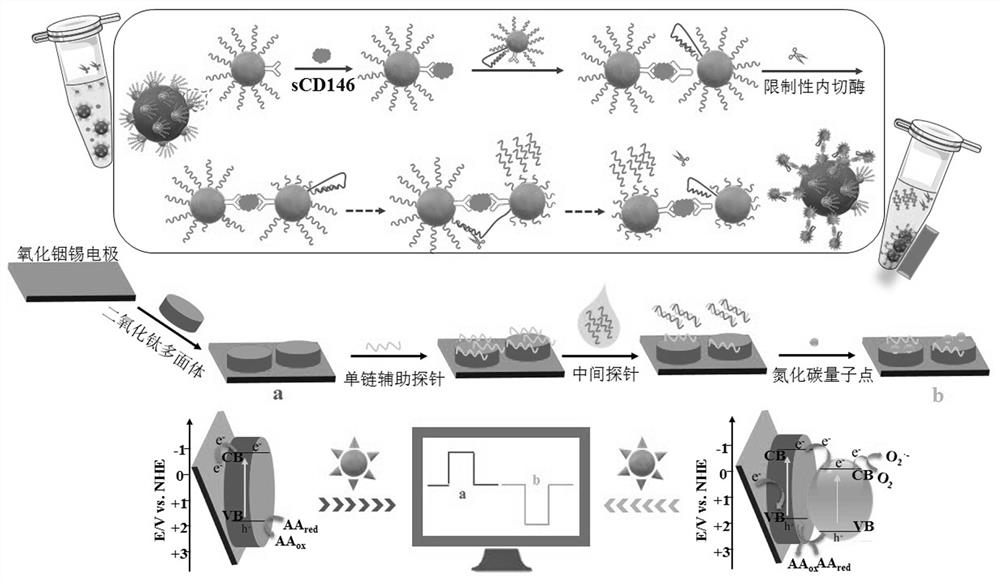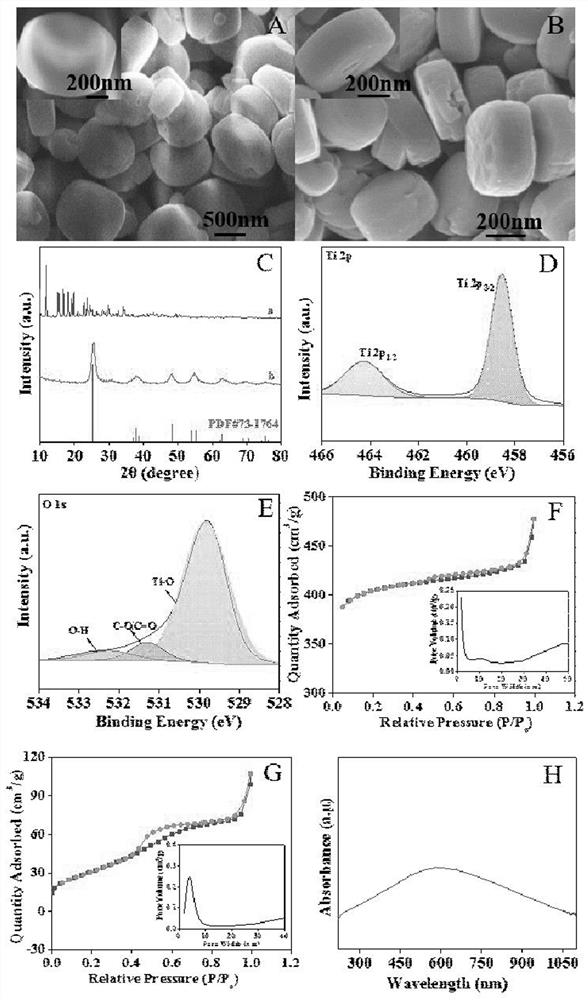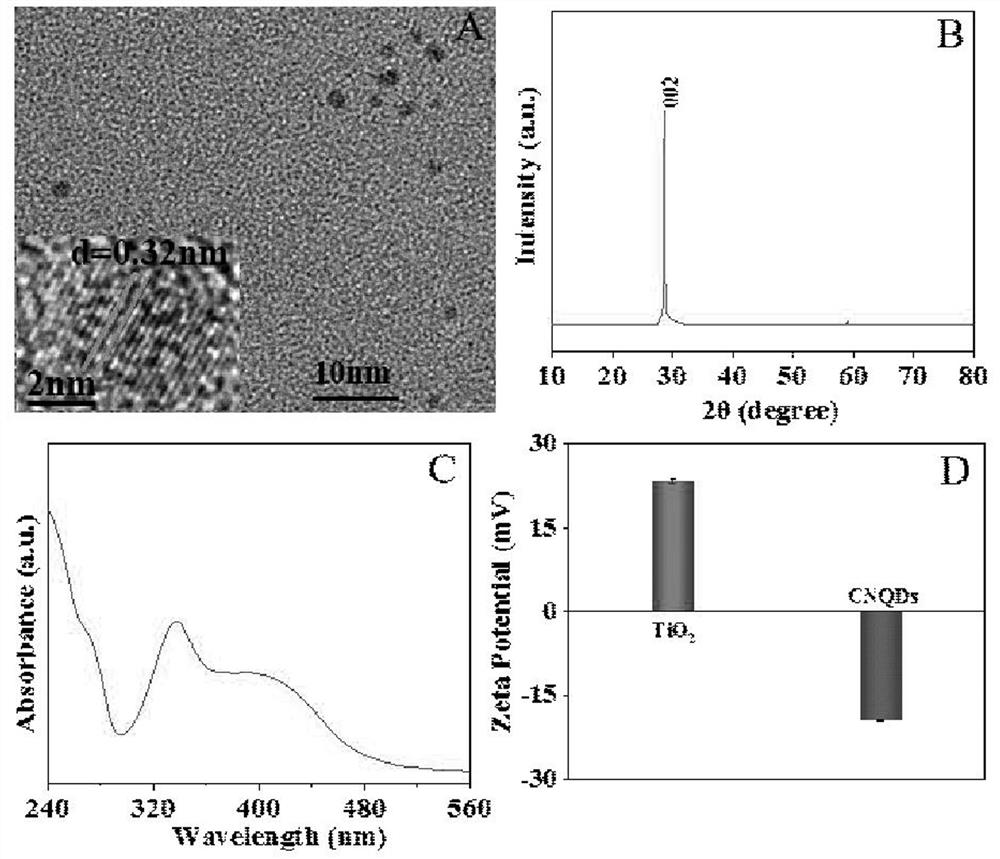Signal turnover type photoelectrochemical biosensor for detecting cancer markers as well as preparation method and application of signal turnover type photoelectrochemical biosensor
A biosensor, photoelectrochemical technology, applied in the biological field, can solve the problems of reduced photoelectric conversion efficiency, increased electron transfer path, toxic photostability, etc., and achieves the effect of improving the inversion efficiency, shortening the electron transfer path, and having a good application prospect.
- Summary
- Abstract
- Description
- Claims
- Application Information
AI Technical Summary
Problems solved by technology
Method used
Image
Examples
Embodiment 1
[0055] see figure 1 , Embodiment 1 of the present invention provides a signal inversion photoelectrochemical biosensor for detecting cancer markers, the sensor is mainly prepared by the following steps, the preparation steps include preparing indium tin oxide / titanium dioxide electrodes, preparing indium tin oxide / titanium dioxide / Single-stranded auxiliary probe electrode, preparation of conjugate Ab 1 -Fe 3 o 4 @Au-DNA, preparation of conjugate Ab 2 -AuNPs-DNA, construction of intermediate probes and preparation of sensors and other steps.
[0056] 1. Preparation of Indium Tin Oxide / Titanium Dioxide Electrode
[0057] will be like figure 2 The metal-organic framework material MIL-125 shown in A was carbonized in a tube furnace at 380 °C for 4 h to obtain the following figure 2 Titanium dioxide polyhedron shown in B; disperse the titanium dioxide polyhedron in ultrapure water to prepare a suspension of titanium dioxide polyhedron with a concentration of 1 mg / mL; add ...
Embodiment 2
[0103] This embodiment provides an application of the biosensor for detecting cancer markers provided in Example 1 in detecting cancer markers.
[0104]Specifically, during the preparation process of the above-mentioned biosensor provided in Example 1, the adsorption reaction time of the single-stranded auxiliary probe on the indium tin oxide / titanium dioxide electrode was 90 min, and the carbon nitride quantum dots on the indium tin oxide / titanium dioxide / single The adsorption time on the chain-assisted probe / intermediate probe electrode was 60 min; the biosensor was placed in 0.1 M ascorbic acid in Tril-HCl buffer solution (pH 7.4, 0.1 M), and a bias voltage of -0.2 V was applied for Photoelectrochemical test, detect the photocurrent signal of sCD146 at the concentration of 10, 100, 200, 1000, 10000, 50000, 100000, 1000000 and 5000000 fg / mL respectively; construct the linearity between the concentration of sCD146 and the photocurrent signal according to the detection results ...
PUM
| Property | Measurement | Unit |
|---|---|---|
| diameter | aaaaa | aaaaa |
| pore size | aaaaa | aaaaa |
Abstract
Description
Claims
Application Information
 Login to View More
Login to View More - R&D
- Intellectual Property
- Life Sciences
- Materials
- Tech Scout
- Unparalleled Data Quality
- Higher Quality Content
- 60% Fewer Hallucinations
Browse by: Latest US Patents, China's latest patents, Technical Efficacy Thesaurus, Application Domain, Technology Topic, Popular Technical Reports.
© 2025 PatSnap. All rights reserved.Legal|Privacy policy|Modern Slavery Act Transparency Statement|Sitemap|About US| Contact US: help@patsnap.com



